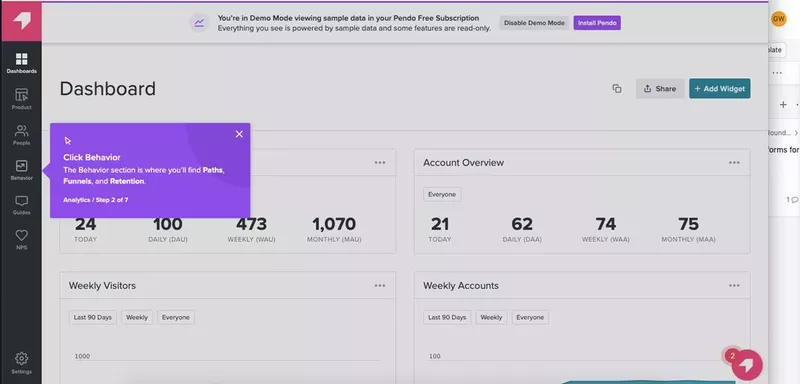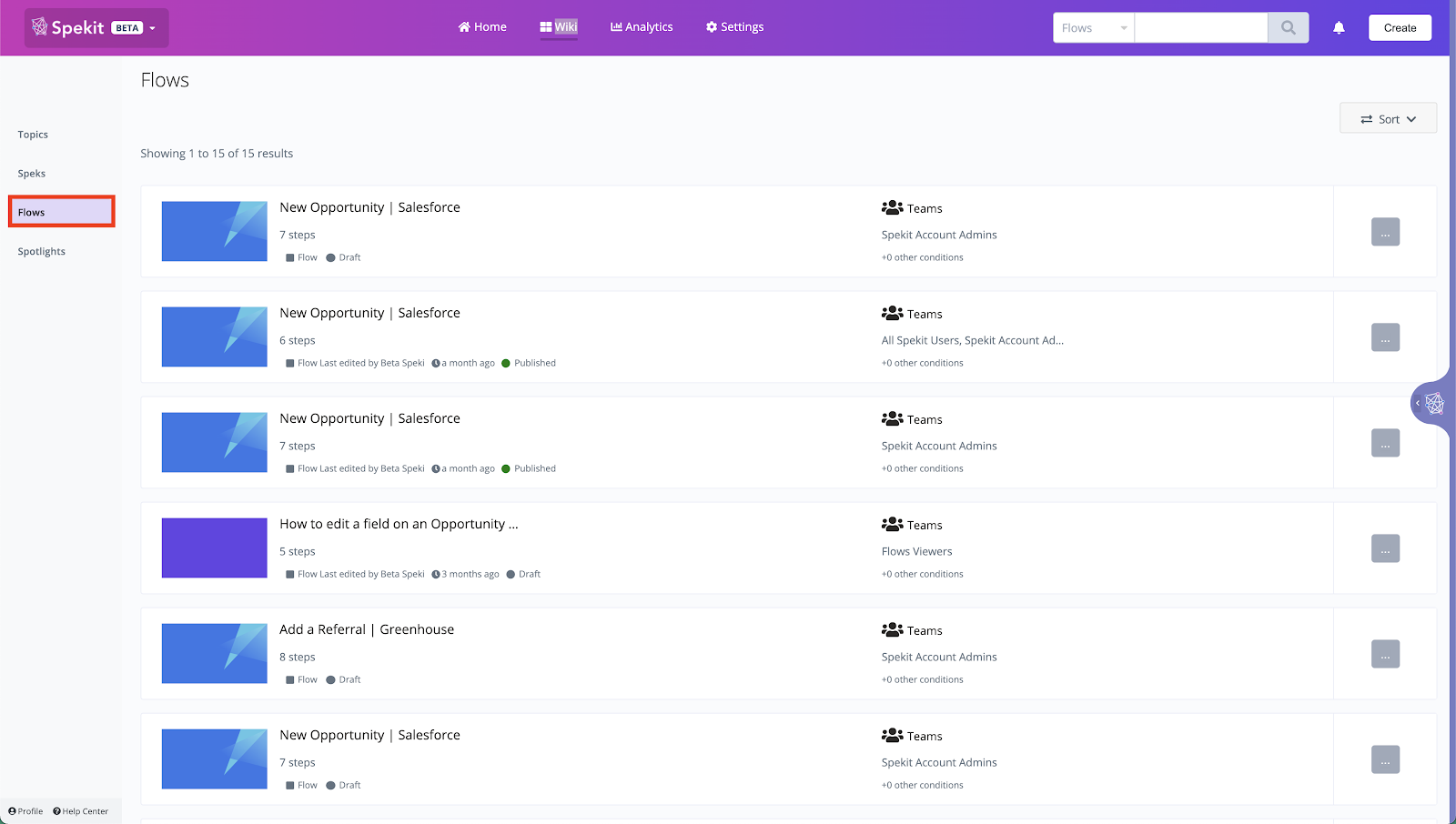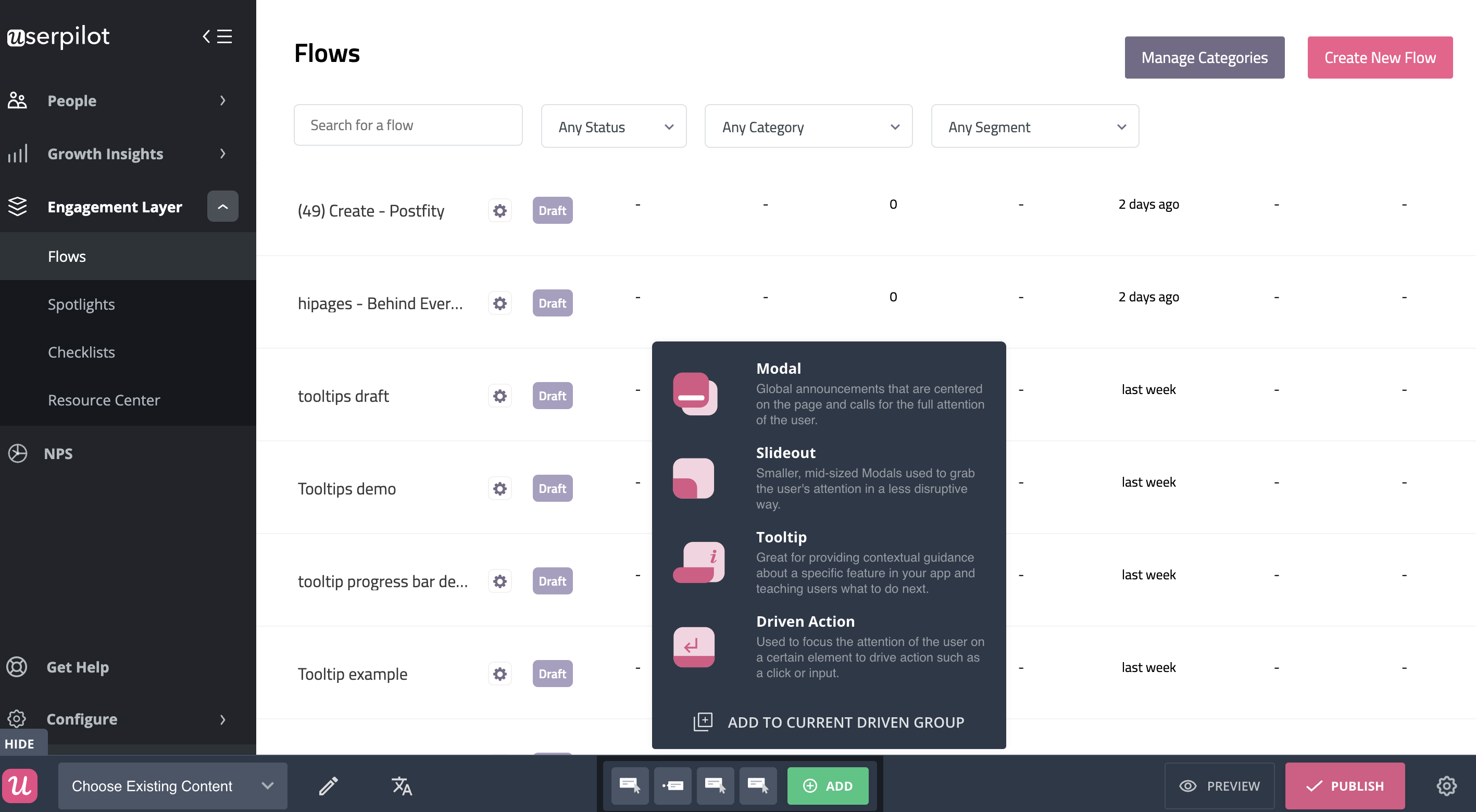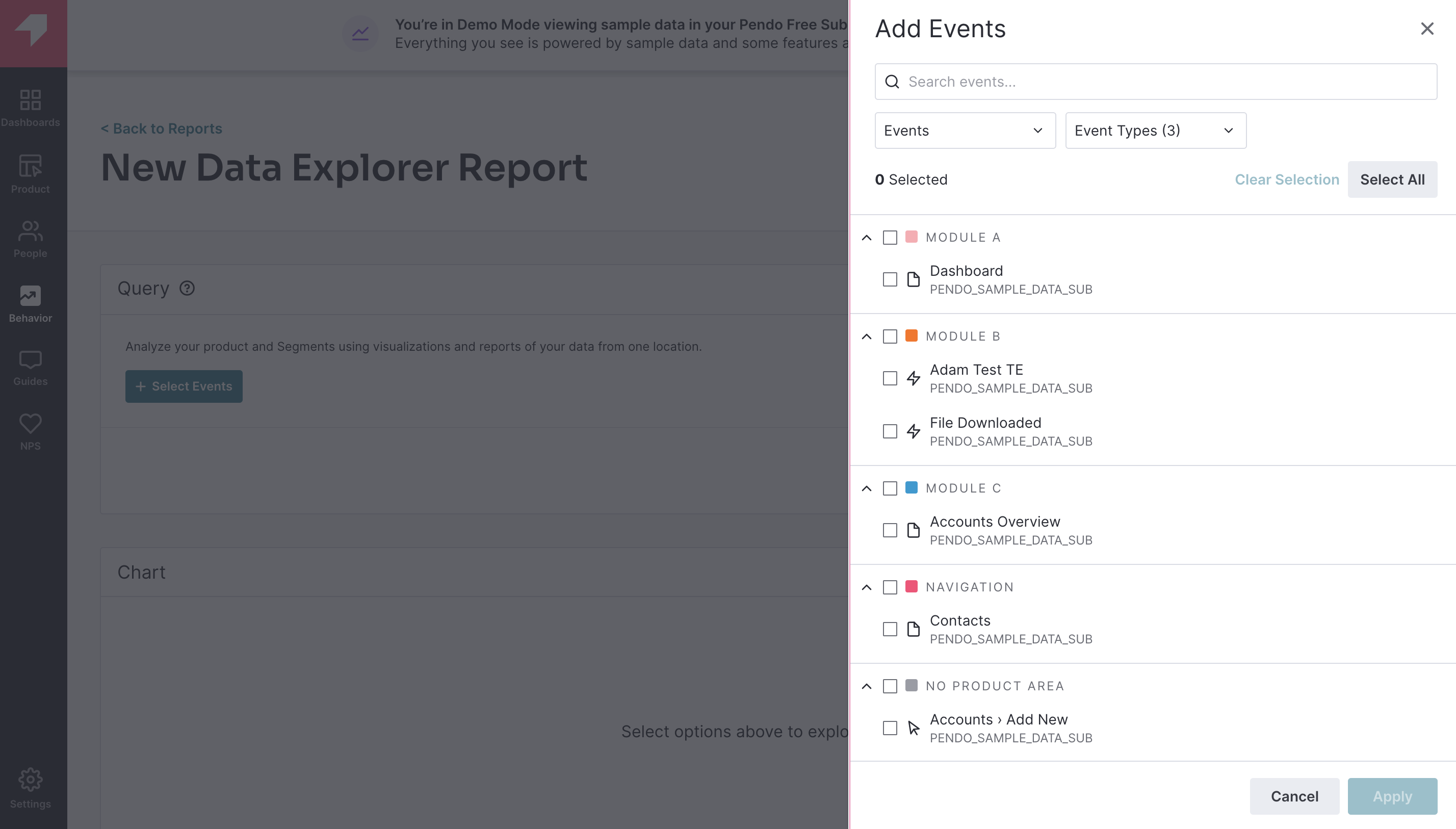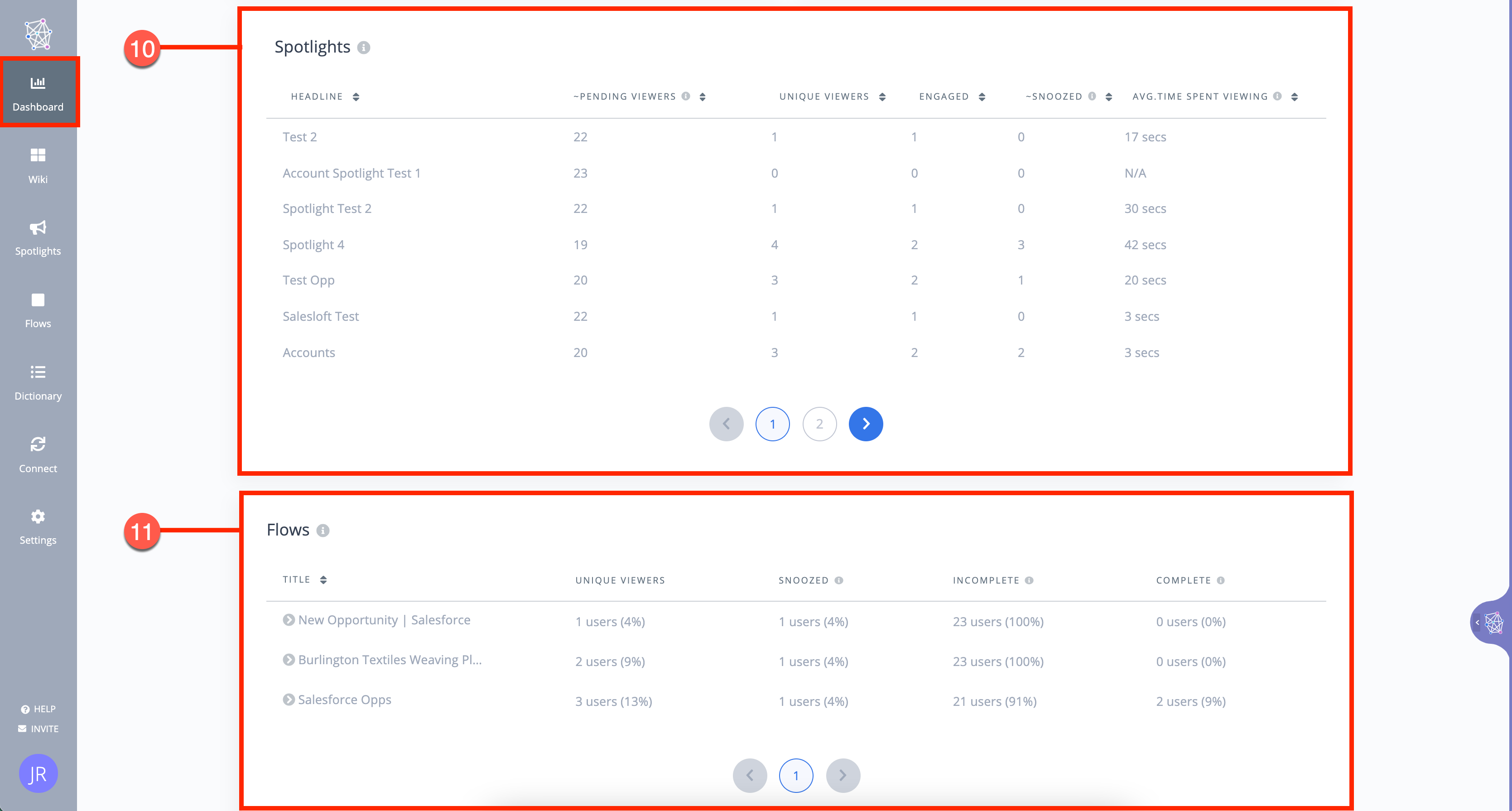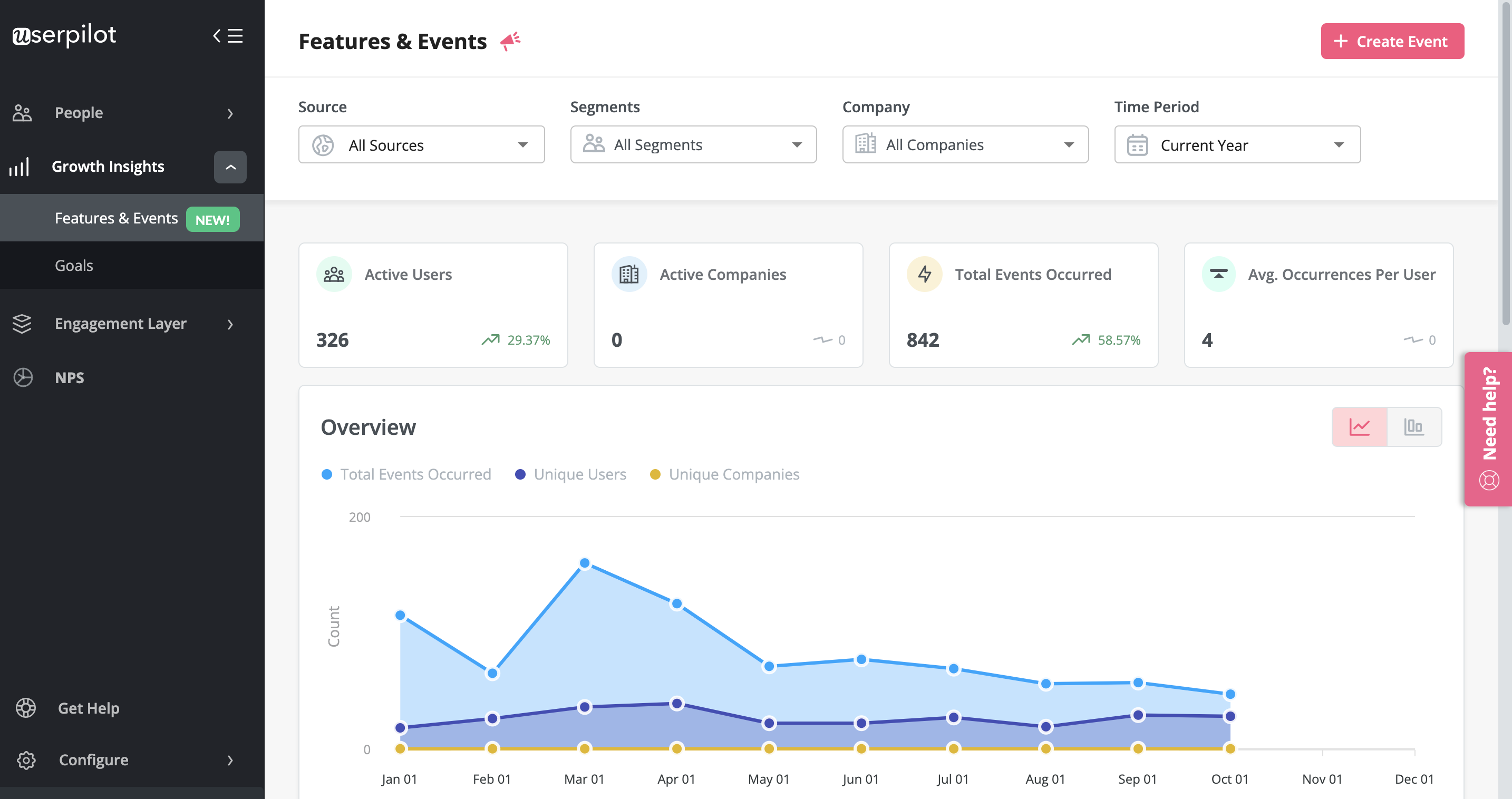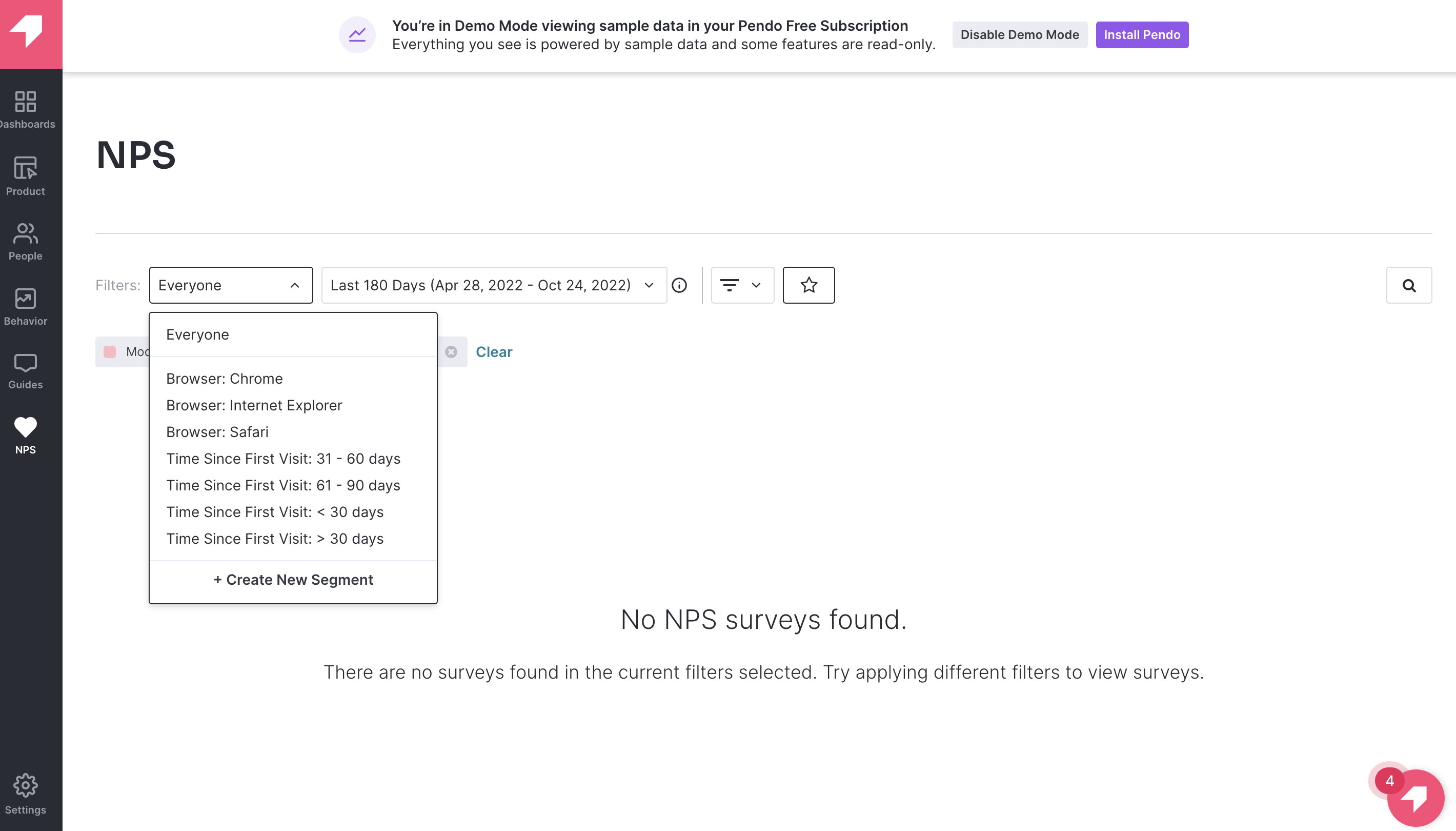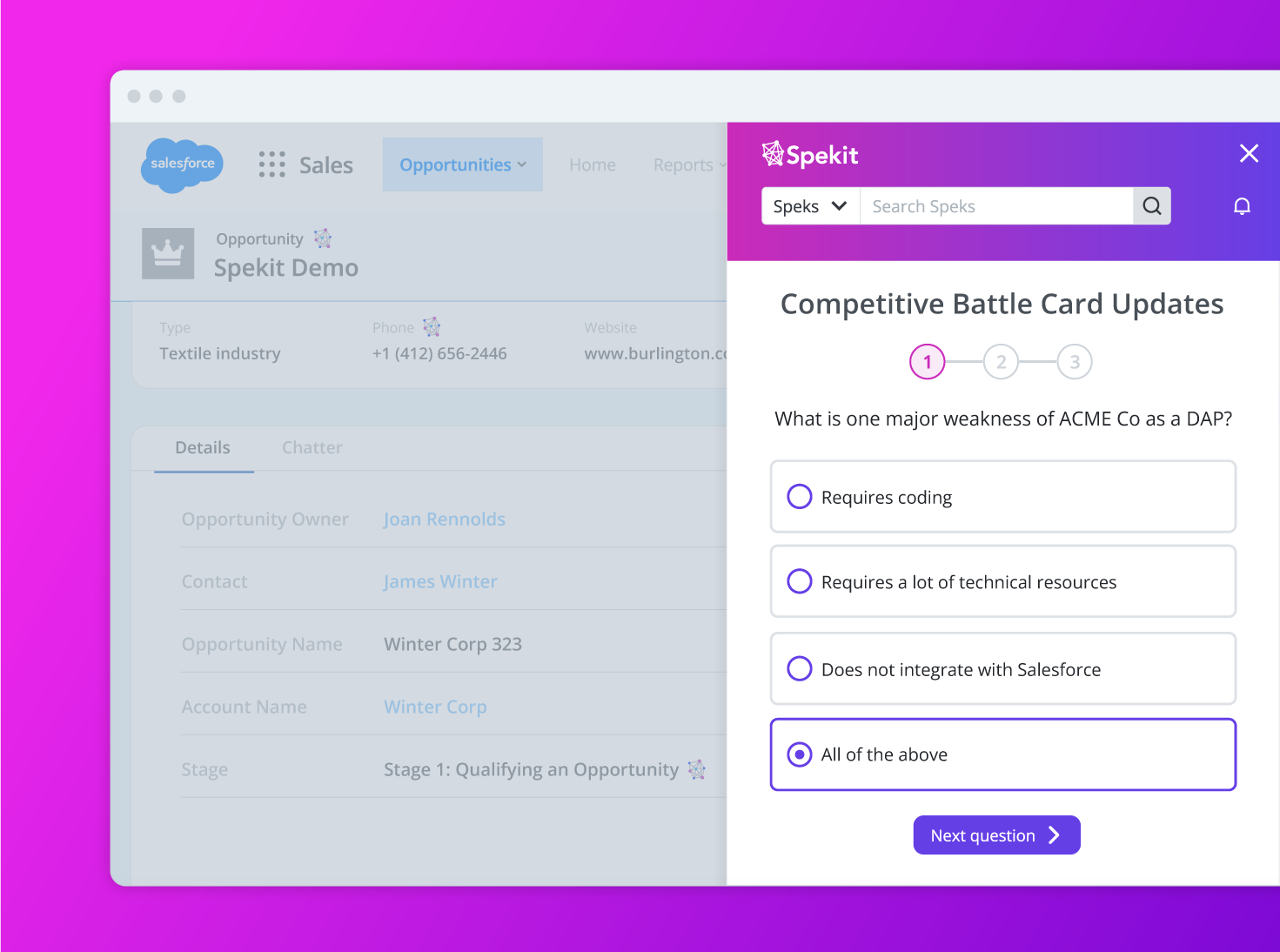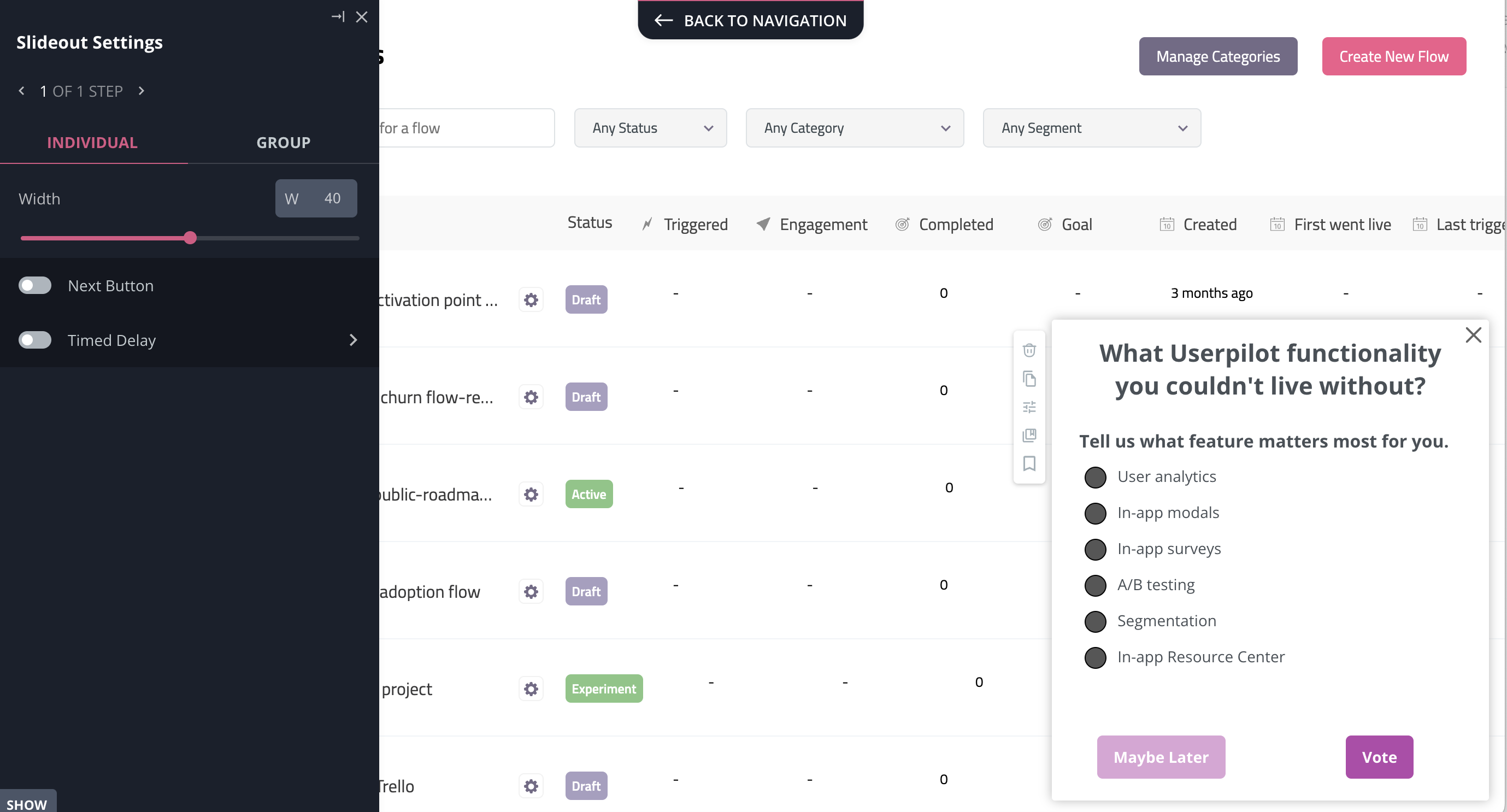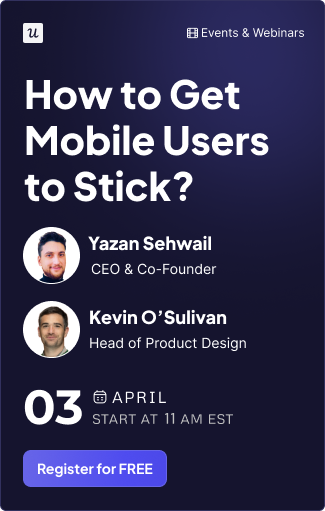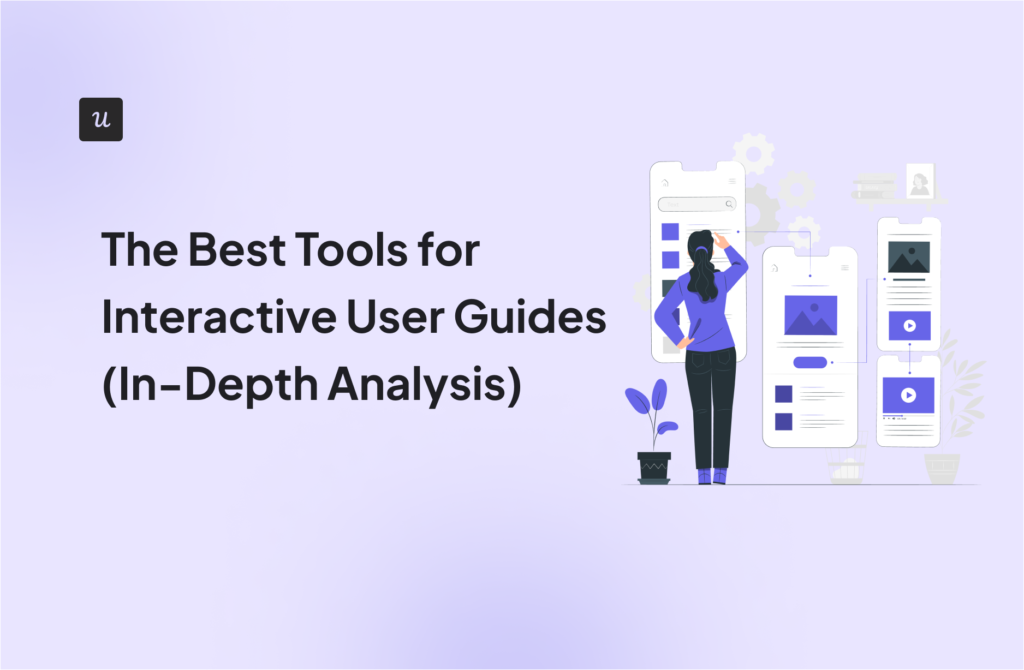
Pendo vs Spekit: Which Is Best For Your SaaS?15 min read
Thinking whether to go for Pendo vs Spekit? Choosing the right user onboarding software is critical for SaaS companies these days.
This article is going to dive into the Pendo vs Spekit debate and try to answer a key question.
Which is the better tool for user onboarding, as well as other use cases? Which one offers the best value for money, and will be most appropriate for a company of your size, with your resources?
Let’s find out! In the post below, we’ve covered all the common use cases and done an in-depth analysis of the key features of Pendo and Spekit – as well as compared it to an alternative solution that may be better in some situations.
Get The Insights!
The fastest way to learn about Product Growth, Management & Trends.
TL;DR:
- Pendo offers guides for developing in-app guidance that enhances user onboarding for both online and mobile apps. However, they come with limitations and are not completely code-free.
- Spekit helps you create step-by-step walkthroughs and guide customers, as well as educate employees on third-party apps.
- With Userpilot, you can build a huge variety of user onboarding experiences and in-app guidance flows without writing any code.
- Pendo’s analytics are “out of the box” and need very little setup. However, the in-app experience builder does not let you utilize in-app events as triggers for in-app experiences, making Pendo’s analytics not actionable.
- With Spekit user analytics, you can record internal user activity and see how much time users spend in the app.
- Userpilot allows you to collect customer feedback, track in-app behavior and user interactions with your in-app experiences, as well as act on these insights.
- Pendo provides polls that gather user feedback and assess sentiment at various stages throughout the user journey. The free plan offers polls, which have minimal functionality. However, if you want to utilize NPS surveys to gather user opinions, you’ll need to upgrade to a premium plan, which is quite expensive.
- With Spekit’s Knowledge checks, you can build short surveys to quiz your customers and employees.
- With Userpilot you can create custom user segments based on survey responses or NPS scores and trigger specific in-app flows for them.
Try the best user onboarding tool for your SaaS now!

Pendo vs Spekit – similarities and differences
Pendo and Spekit are both applications for user onboarding, user analytics, and user feedback with several areas of overlap. Both Pendo and Spekit are popular SaaS tools used mostly for user onboarding in SaaS companies. Both products have several similar features.
However, there are several details about the way these particular features are “executed” in both products that may make a substantial difference for the buyer.
They also have very different pricing plans. Let’s look at the details.
Pendo vs Spekit for user onboarding – similarities and differences
In this section of the article, we’re really going to dig into the nitty-gritty of each area of product functionality. That way, we’ll be able to figure out which tool – Pendo or Spekit – is the best option depending on your use case.
Pendo for user onboarding
When it comes to user onboarding, Pendo offers guides for building in-app guidance that improves user onboarding across the web and mobile apps. But how much do they cost, and are there better alternatives on the market?
Here’s what to expect from Pendo guides:
- You can build guides using templates, and there’s also a WYSIWYG (what-you-see-is-what-you-get) visual design studio editor for creating new designs from scratch.
- You can use Pendo’s free version to create user onboarding guides, but you’ll only get access to limited features and basic analytics.
- Types of guides you can create using Pendo include Lightbox, Banner, Tooltips, Polls, and Walkthroughs. The drawback with them is that they are quite basic and don’t allow much customization without coding. Even Pendo’s own onboarding guide is a series of purple tooltips.
- You can also build checklists with Pendo but not as standalone UI elements as users can only access them from the resource center (if they know they exit). This makes it hard and not intuitive for users to access guidance, and overall defeats the purpose of using checklists.
- Pendo product guidance for mobile works across Android and iOS mobile apps, so if you’re looking to support your mobile customers through their onboarding, Pendo might be for you (be aware that Pendo for mobile guides is not included on the free plan).
Guides or product tours are essential tools for user onboarding, and it will be difficult for new users to find their way around your app without them. The absence of these UX designs will lead to friction, naturally resulting in increased churn.
But do you need Pendo for this?
The answer is you don’t have to use Pendo in particular. There are other product adoption tools that give you more value for your money, so it’s always good to check the available options before settling for one.
Spekit for user onboarding
Spekit is not a truly user onboarding tool. It’s built to streamline employee onboarding by guiding new employees through 3rd party tools and processes using no-code, step-by-step walkthroughs.
Here’s how Spekit helps with employee onboarding:
- Spekit’s step-by-step walkthroughs help you build flows for guidance. You can create individual onboarding journeys for different teams. However, the variety of UI patterns is limited to tooltips and modals.
- Spekit allows you to record your flows and edit them, or save them as a draft. You can confirm the positioning of steps looks good, make necessary edits to the texts, and delete steps that are not necessary.
- With spotlights, you can push changes, new resources, or updates to your team the moment they need it – directly within their workflows.
- You can use a single flow to guide employees across multiple tools.
All in all, Spekit has good functionality for employee onboarding but is lacking in collecting user sentiment throughout the onboarding process, as it doesn’t support surveys.
Better alternative for user onboarding – Userpilot
Userpilot was built specifically for SaaS product teams that want to improve their user onboarding experience and boost user activation.
You can build a huge variety of user onboarding experiences and in-app guidance flows without needing to code.
Get the best value for money and drive growth at every stage of the user journey.
Here’s what you’ll get when you start using Userpilot:
- Forget about coding in-app experiences: Userpilot is a no-code solution and only requires your dev to install a line of javascript inside your app and for you to download a chrome extension that opens up the visual builder.
- Build in-app flows using the largest range of UI patterns (modals, slideouts, tooltips, hotspots, banners) and in-app onboarding experiences (checklists, microsurveys, NPS surveys, in-app resource center).
- Get access to a built-in NPS tool for collecting and analyzing user sentiment so you can improve your onboarding process based on real data.
- Create and track combinations of in-app events like clicks, hovers and form fills, and then analyze all these interactions under your own custom events, which can be built without code or API calls.
- Use advanced product analytics and in-app flows analytics to identify where users need help and create granular user segments to trigger in-app experiences contextually (segment based on user identification data, in-app engagement, custom events, clicks, hovers, form fills, user feedback responses, NPS scores and more).
- Enhance the onboarding experience with in-app help by launching a Resource Center directly inside your app. Add in-app guides, and video tutorials, and give users access to search the knowledge base or reach out to support. Self-service has never been easier.
The best user onboarding is contextual and it happens right where the users need it, inside your app. There isn’t a better user onboarding tool out there that offers more value for the money than Userpilot.
Schedule a demo with our team and get ready to build the best onboarding experiences your users have seen.
Try Userpilot – the best user onboarding solution for SaaS
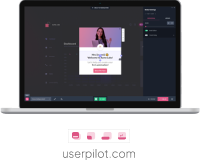
Pendo vs Spekit for user analytics – similarities and differences
In this section of the article, we’re really going to dig into the nitty-gritty of each area of product functionality for user analytics. That way, we’ll be able to figure out which tool – Pendo or Spekit – is the best option depending on your use case.
Pendo for user analytics
Many SaaS businesses rate Pendo analytics among the best in the industry. There’s certainly a lot of buzz about their analytics in the onboarding world at the moment.
Why?
Pendo’s analytics are coming “out of the box” – with very little setup required. They are supposed to be easier to set up than proper analytics tools like Mixpanel, Heap, or Amplitude.
The question is: do the analytics features offered by Pendo live up to the hype? And are they really worth the $50,000 price tag most companies will be expected to pay for their yearly Pendo analytics subscription?
Here’s what Pendo analytics will get you:
- Pendo’s analytics center around three main features: Paths, Funnels, and Cohorts.
- Paths show you all the actions taken by users before or after a specific event. You can only compare 2 paths at a time in Pendo.
- Funnels show you how many users completed each stage of a specific funnel that you predetermined. Userpilot’s Goals feature is comparable, but shows a higher number of goals at once and requires fewer clicks to do so.
- Reports allow you to track page views, clicks, events, or guide views related to whichever feature you want. Compared to Pendo’s other analytics features, this feels like vanity data.
- Retention shows you the percentage of customers who stick around relative to the first time they used your product. The graph is visually impressive but lacks a qualitative explanation about why users are retained.
- Product engagement score (PES) is a single number calculated by Pendo that uses core events and account data to calculate percentile scores for feature adoption, user stickiness, and user growth and combines them into a single score (of 100). PES score can only be found in Pendo although other product analytics tools offer similar types of engagement data.
The downside? Pendo’s analytics are not actionable – the in-app experience builder doesn’t allow you to use in-app events as triggers for in-app experiences.
There is also a 1-hour delay in the Pendo user analytics display on their dashboard. This makes Pendo’s user analytics feature less actionable than those of tools that offer real-time user analytics (e.g. Userpilot).
Spekit for user analytics
Spekit is a product adoption tool with the main focus on employee onboarding. When it comes to user analytics, it provides limited information regarding users and flows.
For instance, you can see the status of your flows (completed, incomplete, not started) but you can’t detect friction points in case of incomplete tasks, therefore you can’t improve user experience.
Let’s learn what insights Spekit’s user analytics provide:
- Spekit analytics only record internal user activity. So you won’t be able to see how your external users perform in your application.
- You can see how much time your users spend on flows and spotlights but that is pretty much it.
- You can collect user sentiment with emoji reactions but you won’t be able to collect qualitative data.
As you can see, Spekit provides simple analytics. But in order to gain more insights into analytics, you will need to use a separate user analytics tool with it that will track user behavior and provide proper analytics.
Better alternative for user analytics: Userpilot
In short, Userpilot analytics allows you to:
- Track all of your user interactions with your app – without coding- with the powerful feature tagging functionality, you can simply tag your users’ actions (clicks, hovers, form fills) with a no-code, point-and-tag editor on top of your product.
- See all your user clicks, activity trends, etc. in an easy-to-use dashboard – Userpilot also allows you to drill down into feature usage, down to the individual user level, as well as company level.
- Analyze your user paths from up to 4 pages at a time, at a glance.
- Create ‘user funnels’ made up of feature tags and tracked events, and see where your users are dropping out of the funnel – and act on these drop-off points instantly with in-app experiences.
- Track feature usage by user segments with heatmaps, directly on the different pages of your product.
- Create and track combinations of in-app events like clicks, hovers and form fills, and then analyze all these interactions under your own custom events, which you can build without code or API calls.
- Create custom events that consist of feature tags as well – or combinations of tracked events you’ve passed through the Userpilot track script with features you have tagged with the Chrome Extension.
- The powerful trends overview allows you to filter your events and feature tags’ usage by segments, time period, and even company. This allows you to track and analyze event usage trends and even drill down to the individual users (or companies) who engaged with specific custom events and show them the right in-app experience.
- Apart from product usage data, Userpilot also has built-in analytics for in-app engagement with in-app flows and experiences.
- Analyze how users engage with your checklists or resource center modules, identify trends, and A/B test different approaches to improve engagement.
- Last but not least, Userpilot allows you to use all that data to build highly granular user segments and reach users with the right engagement flows at the right time.
- You can even create user segments based on survey responses or NPS scores.
Now, with so much power on your hands – what are you going to do with all this data?
Try Userpilot – the best user analytics solution for SaaS

Pendo vs Spekit for user feedback – similarities and differences
Finally, most SaaS companies considering Pendo vs Spekit want to look at their functionality for user feedback. Let’s dive into it in more detail.
Pendo for user feedback
Pendo offers polls (also called micro surveys at Userpilot) through their guides which collect user feedback and gauge sentiment at different points in the user journey.
Polls come with basic functionality and are available on the free plan. However, if you want to collect user sentiment with NPS surveys, you’ll need a paid plan that doesn’t come cheap at all.
Here’s how you can collect user sentiment feedback with Pendo:
- Add short polls on your guides and UI patterns built with Pendo.
- You can use only text polls, yes/no polls, numbered scales, or multi-choice polls and add them as building blocks when building the guides.
- There’s not a lot of customization, like themes or emojis available, but it’s enough to collect data in-app.
- If you are willing to pay for the Growth plan, you get access to Pendo’s NPS feature too.
The downside of using Pendo for collecting user feedback is that you can’t use the insights to personalize the user experience. For example, you can’t create user segments based on NPS scores or specific answers you collect with your polls.
Considering the price you have to pay for Pendo, you’d expect more from it.
If you want to both collect and act on user feedback, you should use a better tool. And, with the risk of sounding biased, Userpilot gives you more value for money here. You can build micro surveys, embed Typeform long surveys, collect and analyze NPS responses, and segment users based on scores and responses so you can trigger more personalized experiences.
Get a Userpilot demo here.
Spekit for user feedback
Here’s what you can do using Spekit’s Knowledge checks:
- Build short surveys designed to quiz your employee’s knowledge about the platform they are using.
- Trigger those surveys in-app to specific user segments.
- Determine who passes based on your selected answers and required completion.
Not exactly user feedback, but the surveys you can build with Spekit are interactive and accessible in-app, which increases engagement with them. If you want to collect true user feedback in various stages of the journey you should look at a different tool.
Better alternative for user feedback – Userpilot
There are two types of feedback you should be focusing on collecting to better understand the health of your product and users.
First, you have user sentiment which looks at user satisfaction and effort scores or loyalty (using NPS surveys). Then you may also want to collect feedback on the functionality of the product or specific features.
You can do all these with Userpilot. In short, you can:
- Collect and track (NPS) in-app with a built-in NPS widget that allows you to fully customize the survey look and feel, and set the trigger frequency and specific targeting.
- Analyze NPS scores, tag responses, and use the data to create specific user segments.
- Build and trigger in-app micro surveys like the classic PMF survey, or similar ones and mix multi-choice and open-ended types of questions to collect specific insights.
- Be in charge of who gets which survey type and when with advanced segmentation capabilities, and of course, you can use the answers to segment your audience.
The advantage of using Userpilot for collecting feedback over other survey tools is that you can better control who sees the surveys but also you can instantly use the data collected to segment your user base and trigger the right experience for them.
For instance, if your users give you a low NPS score because they think you’re missing a critical feature (that you actually have already), you can push an interactive walkthrough guiding them to find and explore this feature.
Conclusion – which tool is better for your SaaS, Pendo or Spekit?
Hopefully, this post helped you decide whether Spekit or Pendo is more appropriate for your company. As you can see – both have many upsides and downsides.
Undeniably, Userpilot provides a better value for money and is a better choice for a mid-market SaaS, especially when it comes to user onboarding and user feedback.
If you’re interested in finding more book a demo with our team here!
Try Userpilot – the best user onboarding solution for SaaS


